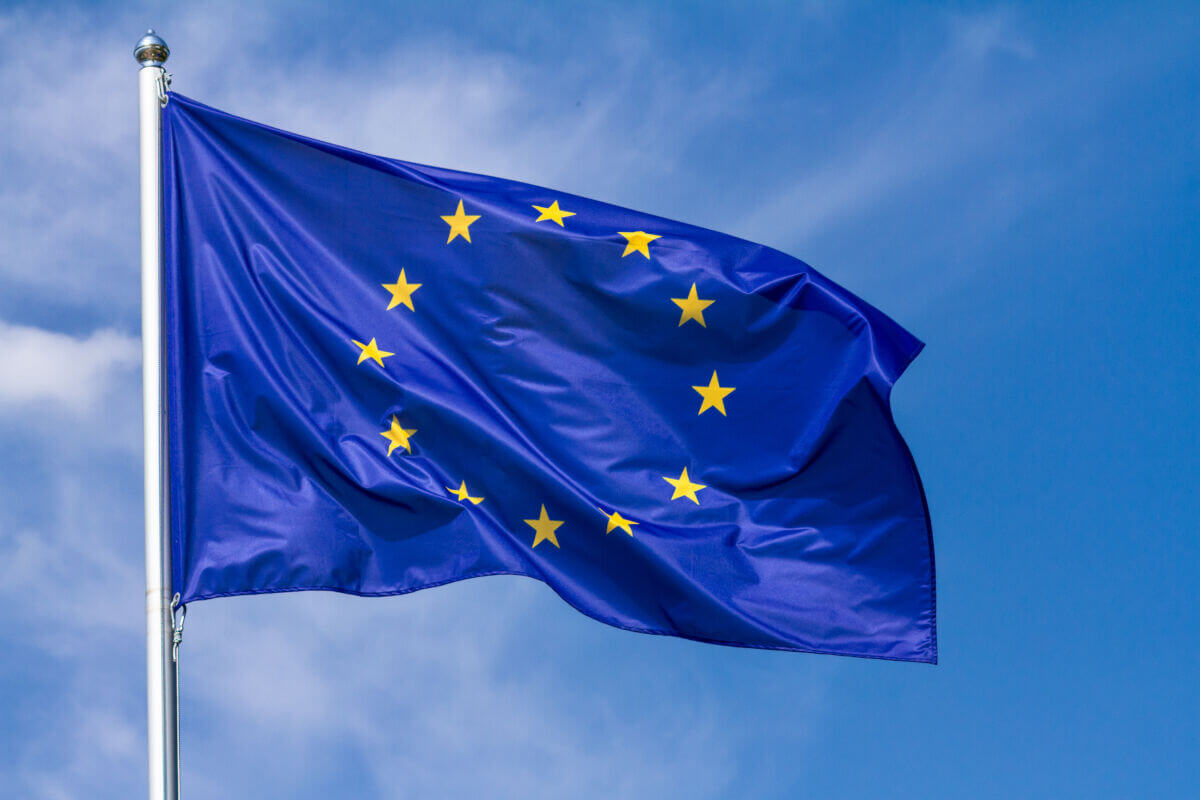Climate policy developments in the Netherlands: Dutch government presents 'ambitious, fair and practicable' additional climate package
On 26 April 2023, the Minister for Climate & Energy (Minister) presented the ‘ambitious, fair and practicable’ package of additional climate measures in his letter to the House of Representatives (Letter) aiming at an additional CO2-emission reduction of 22 Mton in 2030. A total number of 122 measures are presented with an underlying motto of “better green here, than grey elsewhere”, with a total cost of EUR 28 billion. In the Letter, the proposed measures are categorised per EU-ETS and ESR-sector[1], including an outlook of the envisaged ‘spot on the horizon’ for each sector. In this blog we will set out a selection of notable measures.
Introduction
The climate goals set by the Dutch government are based on, and part of, the European climate goal of reaching a CO2-emission reduction by at least 55% by 2030 compared to 1990 levels, with the EU’s ultimate goal to achieve climate neutrality by 2050. To ensure that the Netherlands will reach this 55% reduction level in 2030, the government aims at reaching a slightly higher, approximately 60% reduction level. According to the Minister, the presented measures of 26 April 2023 are necessary to reach an additional greenhouse gas (GHG) emission reduction of approximately 22 Mton in 2030. Distinctive measures are taken in the following sectors.
- Electricity
- Industry
- Buildings and the built environment
- Agriculture and Land Use
- Road transport and mobility
Electricity
The government toughens the climate ambition for electricity generation even more and strives for CO2-free electricity generation in the Netherlands that is affordable and reliable, as early as 2035. According to the Minister, this ambition can be achieved, amongst others, by:
i) enhancing the supply of solar and wind energy and the conversion of existing power plants from coal-fired to renewable energy sources, including promotion of the use of (green) hydrogen;
ii) considering that with deployment of two additional nuclear power plants (if up and running by 2035), a major step can be taken towards a CO2-free electricity system; and
iii) stimulating electricity storage by investing in battery innovations and by mandating large-scale solar parks to use batteries. The latter requirement should make it possible for solar generated electricity to be used on cloudy days and to minimise congestion of the electricity system.
Ad i) One of the legislative developments on EU-level which is relevant for enhancing the supply of renewable energy on national level is the Council Regulation (EU) 2022/2577 of 22 December 2022 laying down a framework to accelerate the deployment of renewable energy.[2] This EU ‘Emergency Regulation’ should temporarily speed up amongst others, the permit-granting process for i.e. solar energy projects.
Ad ii) The Minister emphasizes that research is required for the exact role of nuclear power plants. Also, the Minister wants to accelerate the development of small modular reactors (SMRs) from the design phase to realisation.
Ad iii) The current Electricity Act does not contain provisions on electricity storage. A legislative overhaul of (amongst others) the Electricity Act as processed in an Energy Bill which should also implement electricity storage provisions from the recast of the Electricity Directive (EU) 2019/944 of 5 June 2019[3], is delayed. The reason for the delay is that the Energy Bill was scrutinized by the legislative Advisory Division of the Council of State on 1 February 2023. The Minister notes in an annex to the Letter regarding the legislative program that the envisaged entry into force date (once the Senate gives green light to the Energy Bill) of 1 January 2024 is pushed backwards to 1 July 2024.
Some concluding remarks on the measures which will affect the electricity sector and the development of renewable electricity are that the government aims to balance electricity demand by expanding the Dutch electricity and hydrogen transportation and distribution system and by improving its connections with neighbouring countries.
Also, the focus should not only lie on renewable energy production, but also on energy saving. Therefore, the energy saving obligation for large-volume users will be expanded and specific energy saving targets will be set per sector. The Minister intends to improve the compliance of the energy saving obligation.
Industry
To encourage the industry sector to reduce CO2 emissions, by setting out better regulation, pricing and subsidies. In his letter the Minister sums up a couple of measures that regards the industry. These include:
– intensifying customised agreements with the largest CO2-emitters in order to reach the 3.5 Mton CO2-emission reduction by 2030;
– the withdrawal of the possibility to trade in released dispensation rights. This will be arranged through the abovementioned customised agreements. The reason for the withdrawal is to ensure that these companies will not leave the Netherlands and therefore move their emissions to another country. The amount of withdrawn dispensation rights equals the agreed CO2-reduction as laid down in the customised agreements.
– measures regarding the CO2-Tax (CO2-heffing). One of the measures to be taken is to increase the current tariff for the CO2-Tax for industrial companies in the Netherlands per 2025. Additionally, CO2-Tax will also be extended until 2032 to ensure investment certainty.
– the adjustment of the reduction factor. This reduction factor determines the amount of dispensation rights a company will or will not receive;
– raising the minimum price of CO2 for the industry sector. The minimum price forms part of the CO2-Tax and makes it possible to tax CO2-emissions once the EU ETS forward price falls under a specified minimum. According to the Minister this should give companies a tax incentive to reduce CO2-emissions;
– fast-tracking the transition from a linear to a circular economy.
According to the Minister, these measures should result in a sustainable green industry sector without ‘leaking CO2 emissions’ to other countries.
Buildings and the built environment
The ‘spot on the horizon’ for this sector is that, according to the Minister, millions of houses and buildings should be made sustainable by 2030. The largest amount of legislative proposals being prepared sees to the buildings and the built environment sector. The government’s focus lies on (districts with) houses and buildings with the lowest energy labels E, F and G.
Key measures for the buildings and built environment sector are:
– an obligation for commercial building owners to improve or make their housing stock (worst buildings) more sustainable by at least 15% by 2027 and 25% by 2030;
– the availability of subsidies such as an investment subsidy for sustainable energy and energy saving (Investeringssubsidie Duurzame Energie en Energiebesparing (ISDE)) for (improvements on) house insulation and/or heat pumps. Also, a subsidy to finance the non-profitable amount of heat systems is introduced by publication of the Heat Infrastructure Subsidy Scheme (Warmte Infrastructuur Subsidieregeling (WIS)) The WIS will be open for application on 1 June 2023 and close on 16 December 2023; [4]
– that an additional requirement for E, F or G-labelled rental homes will apply, comprising that these homes will not be allowed to be let from 2029 onwards, if these homes are not made sustainable up to a level of at least an energy label D.
The announced measures for this sector consider reasonable terms and will follow a ‘natural moment’ such as a transaction or renovation. However, commercial building owners are required to act with more speed than private home owners.
With regard to the transition to sustainable heating of buildings, it is worth noting that the bill to amend the current Heat Act (i.e. the Collective Heat Supply Act (Wet collectieve warmtevoorziening (Wcw)) is still in preparation phase, due to the Minister’s intention to include the requirement of (at least 51%) public ownership of collective heat systems.[5] The expected entry into force date (once the bill has been approved by the Senate) has been pushed backwards from 1 July 2024 to 1 January 2025.
Agriculture and Land Use
The government will maintain a reduction goal of 5 Mton for livestock and crop farming by 2030. Of this 5 Mton reduction, 1 Mton reduction is likely to be reached through buy-out schemes. The other 4 Mton will be achieved by regulatory and pricing policies.
With regard to land use, the emphasis will, amongst others, be on stimulating the development of geothermal heat. An amendment of the Mining Act (and its accompanying regulations) to improve the permit system for exploring and producing geothermal heat is already approved by the Senate and is envisaged to enter into force on 1 July 2023.
Road transport and mobility
The spot on the horizon for this sector is that Dutch road transport will be without emissions of harmful exhaust gases and CO2 by 2050. To reach this goal, the government will:
– stimulate employers to opt for electric cars, public transport and/or (electric) bikes for their employees;
– accelerate the roll-out of zero-emission passenger cars;
– subsidise the purchase of a pre-owned electric car.
Simultaneously, the government will invest in more charging infrastructure for electric vehicles.
Additional expenses coming from these measures will be covered by increasing the fixed base of the purchase tax of cars.
Heavy road transport as well as transport through inland waterways are also included in the measures on road transport and mobility by increasing the deployment of biofuels and the use of hydrogen as fuel for heavy road transport, but also by introducing an emission label through the new EU ETS2.
As for aviation, the Dutch government decided in principle in its letter to the House of Representatives of 17 March 2023 to work out in more detail and to implement a CO2-ceiling per airport under certain conditions.
Other measures
Next to the categorised measures for the specific sectors in the Netherlands, other, more general measures will be taken. These measures specifically see to, amongst others, adjustment of the energy tax for the use of gas (e.g. by introducing a (lower) tariff when using green hydrogen), tightening of the energy savings obligation (i.e. next to the large volume energy users mentioned above), expanding the stimulation of renewable energy production subsidy (SDE++), the wide application of the new EU ETS (ETS2) in 2027 and the use of the Climate Fund.
A focus on ‘negative emissions’ (i.e. activities that remove CO2 from the atmosphere, such as carbon capture (utilisation) and storage (CC(U)S)) of CO2 will be needed at least until 2030. The government will look into how these activities (contributing to lowering CO2-emissions by energy plants and waste processing facilities) can be stimulated as efficient and fair as possible, without taking the focus away from CO2-emission reduction. The abovementioned expansion of the SDE++ budget to EUR 8 billon in 2024 and 2025 can contribute to stimulating these activities.
Furthermore, (because of criticism and public debate on) tax incentives for fossil fuels- and fossil raw materials are being looked into, to examine how these benefits can be phased out and within which timeframe.
Costs and financing of these additional measures
As mentioned, the total costs of these measures will amount to approximately EUR 28 billion. These costs will largely be covered by the recently established climate fund. The remaining part will be covered by unused subsidies and, as mentioned above, a tax increase on new fossil fuel (combustion engine) cars.
Next steps
Most of the announced measures are either already included in legislation or have entered into force (such as the CO2-Tax and CO2-minimum price for the industry sector) or in draft legislative proposals. For some of the measures new legislative proposals need to be drafted. Also, a number of current national legislation are awaiting implementation of European legislation. This means that a flood of new legislation is expected and will probably be presented in a short period of time, since the climate goals (as well as the additional goal of reducing GHG-emissions by approximately 22 Mton in 2030) have to be met before or on 2030 or 2050 respectively.
On national Budget Day (Prinsjesdag), held traditionally on the third Tuesday of September, the Netherlands Environmental Assessment Agency (Planbureau voor de Leefomgeving (PBL)) will present a forecast on the range of CO2-emission reduction in 2030 compared to 1990. The government will then assess, based on the estimated range by PBL, whether the climate goal of CO2-emission reduction of 55% in 2030 is within reach.
The published Letter of the Minister including the accompanying annexes (in Dutch only) can be found here.
Our Energy, Industry & Renewables Team is happy to answer your questions on this blog or to assist you on other energy related matters.
You are welcome to join our LinkedIn Van Doorne Energy Community to stay informed on climate and energy related developments in the Netherlands.
[1] These sectors include: electricity and heat generation, and energy-intensive industry sectors (as covered by the EU-ETS); as well as road transport, agriculture, buildings, small industries and waste (as covered by the ESR). The abbreviation ESR stands for the Effort Sharing Regulation, i.e. Regulation (EU) 2023/857 of the European Parliament and of the Council of 19 April 2023 amending Regulation (EU) 2018/842 on binding annual greenhouse gas emission reductions by Member States from 2021 to 2030 contributing to climate action to meet commitments under the Paris Agreement, and Regulation (EU) 2018/1999) (Official Journal L111, 26 April 2023, p. 1-14).
[2] Official Journal EU L335, 29 December 2022, p. 36-44.
[3] Official Journal EU L158, 14 June 2019, p. 125-199.
[4] More information can be found on the website of the Netherlands Enterprise Agency (RVO) (in Dutch only): https://www.rvo.nl/subsidies-financiering/wis.
[5] Our Energy Team member Léone Klapwijk wrote a blog on the Minister’s intention regarding public ownership of collective heat systems: https://www.vandoorne.com/en/knowledge-sharing/big-question-marks-around-the-intention-of-the-minister-of-climate-and-energy-toward-more-public-ownership-in-organizing-collective-heat-systems/.



